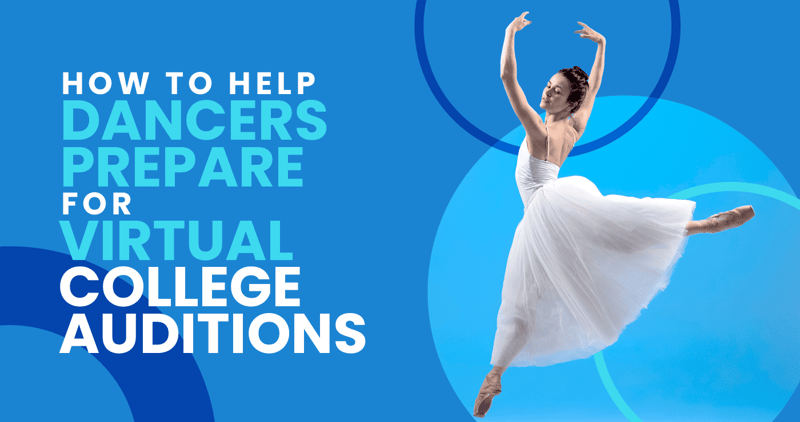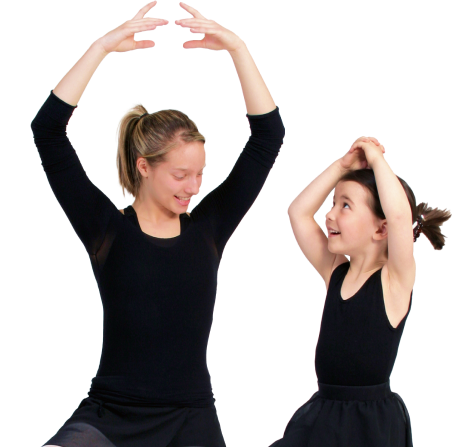If you have upper-level, high-school-age dancers training at your studio, chances are that some of them will want to continue their study of dance in college. Whether they’re planning to major specifically in dance or pursue a related performing arts discipline like musical theatre, they’ll likely look to your studio’s team members—their longtime instructors—to help them prepare for college auditions.
Although many colleges moved their auditions online for the 2020 and 2021 seasons due to the COVID-19 pandemic, virtual auditions are still prevalent in the performing arts landscape. They’re more accessible and cost-effective for applicants and more streamlined for programs. So, you’ll need to adapt your strategies for preparing your students for college auditions to the virtual space.
In this guide, we’ll provide tips and tricks for your team to help your students prepare for the following aspects of virtual college auditions:
- Applying to Performing Arts Programs
- Organizing Their Audition Schedules
- Choosing and Rehearsing Repertoire
- Promoting Self-Care During the Audition Process
How exactly you apply these tips will depend on your students’ needs and the programs they’re applying to. However, framing your process around these general guidelines will set your dancers and team up for success. Let’s get started!
Applying to Performing Arts Programs
Effective virtual audition preparation starts well before your dancers actually audition. Although your studio’s instructors won’t assist with the aspects of college applications that usually come to mind first (such as essay writing and standardized test prep), they can help students with some arts-specific, digital parts of the process, such as:
- Creating profiles on artist recruitment networks that accurately reflect their dance background and talents, which, according to Acceptd, makes it easier for schools to discover them and for them to find programs that align with their goals.
- Compiling and uploading portfolios, including video samples of dances they’ve performed or choreographed through your studio.
- Putting together prescreen submissions—both choosing repertoire to perform (more on this later!) and allowing them to use studio space to record the videos when class isn’t in session so they have plenty of space and a barre to utilize.
It’s also likely that students will ask their instructors to write letters of recommendation for them since they’ve likely known these dancers for years and watched them grow into skilled performers. If this is the case, set aside time for your team members to complete this task and ensure they understand how to upload the letters to each university’s application management system.
Organizing Their Audition Schedules
Especially if students are attending some auditions in person and some virtually, their audition schedules may be tricky to keep track of. Help them with organization by ensuring they have a system to track the dates, formats, and locations of each audition, as well as the materials they’re using for each program.
Additionally, if they approach you with questions about where and how to schedule their auditions, review each university’s website with them to evaluate their options. For instance, if they’re pursuing musical theatre, some of the colleges they’re interested in may participate in the National Unified Auditions. If they want to audition for multiple schools’ programs on the unifieds list, it may be time- and cost-effective for them to audition there in person. However, if they’re only interested in a couple of programs, advise them to audition online for each one to save time and money.
Choosing and Rehearsing Repertoire
Arguably the most important part of your instructors’ involvement in your dancers’ college audition process is helping them choose and practice their audition repertoire. To keep this process as cost-effective as possible for your studio and your students, My College Audition recommends looking for free audition resources online, such as:
- YouTube dance tutorials in various styles
- Past senior showcases from the colleges the dancer is auditioning for
- Blogs and library ebooks that provide audition tips
Working off of these sources of inspiration, collaborate with your dancers to put together audition routines that align with each program’s requirements, showcase their unique skills, and are enjoyable for them to perform. This last factor is more important than you might think—students will need to practice the same moves over and over before their auditions, so liking the routine is often a motivator to keep working hard. Plus, they’ll likely feel more confident performing a routine they enjoy during the actual audition.
Once you and your dancers have figured out their audition routines, ensure they’re prepared to dance in the space they’ll actually use for their virtual auditions. If they’re using an empty room at your studio, set up a camera and lights as you would for the audition so they can get a feel for how to dance with that equipment. If they’re doing their auditions at home, walk them through the setup process in the studio so they can replicate it in their homes.
No matter which of the above options each dancer chooses, watch their practice self-tapes back with them—not only so you can provide constructive feedback on the routines, but also to ensure they seem comfortable in the audition space and make adjustments as needed.
Promoting Self-Care During the Audition Process
College auditions can be an overwhelming process—which students usually have to endure on top of their usual school stress and practicing for other performances through your dance studio. In addition to ensuring your dancers are prepared with their audition logistics, repertoire, and self-taping setup, help them get ready for their college auditions physically and mentally. Some ways to do this include:
- Providing students with resources on wellness (e.g., how to stay hydrated and eat healthy as a dancer) throughout the audition process.
- Incorporating physical recovery and mindset work into these dancers’ classes.
- Being understanding if students need to adjust their class commitments or take time away to heal from an illness or injury that occurred while preparing for auditions.
By taking these steps to promote self-care for your college auditionees (and other dancers), you’ll contribute to the building of a positive studio culture that allows students to achieve even more success through balanced dance training and personal wellness.
The college performing arts audition process is complicated, especially when you add in the virtual aspect that is becoming more and more common. Use the tips above as a starting point to help your dancers get ready, and ask them for feedback afterward so you can capitalize on the aspects of preparation that went well and work on any areas where you have room for improvement to serve future classes of college applicants even more effectively.






